
6 Ways to Improve Collaboration between Product Management and Marketing Teams
Collaboration between product management and marketing teams is essential for the success of any business. Product management teams need to work together to create products that customers will want to buy, while marketing teams need to communicate the benefits of those products with marketing effectively.
By improving collaboration between product management and marketing teams, businesses can ensure that they are creating products that meet customer needs while also being able to market them effectively.
Let's discuss ways to improve collaboration between product management and marketing teams to achieve better results.
Product Manager
The product manager oversees the entire product lifecycle, from ideation to launch. This includes defining the product vision, conducting market research, developing product strategies, validating features and ideas, setting pricing, managing the development process, and ensuring the product meets the target audience's needs.
Product managers focus mainly on the user and work closely with cross-functional teams, including marketing, sales engineering, design, and customer support, to ensure that the product meets the customer's and the business's needs.
Product Marketer
Product Marketer creates awareness and demand for a product. This includes conducting market research, developing marketing strategies, creating messaging and positioning, creating marketing materials, and executing marketing campaigns.
Marketers focus mainly on buyers and work to identify the target audience, understand their needs and motivations, and create marketing messages that resonate with them. They use a variety of marketing channels, such as advertising, public relations, social media, and events, to reach potential customers and create demand.
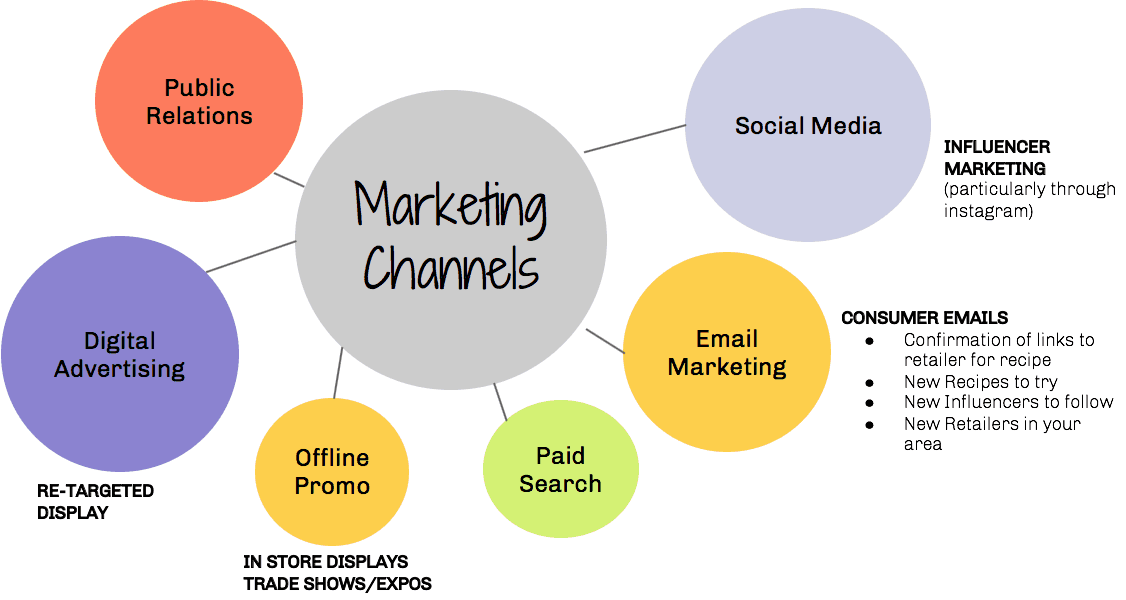
While these two functions have distinct roles, they are also complementary. For example, product managers rely on marketing to help them understand the target audience and identify market opportunities.
They work closely with marketing to ensure the product is positioned correctly and the messaging resonates with the target audience. Product marketing relies on product management to ensure that the product meets the customer's needs and that the marketing messages accurately reflect the features and benefits of the product.
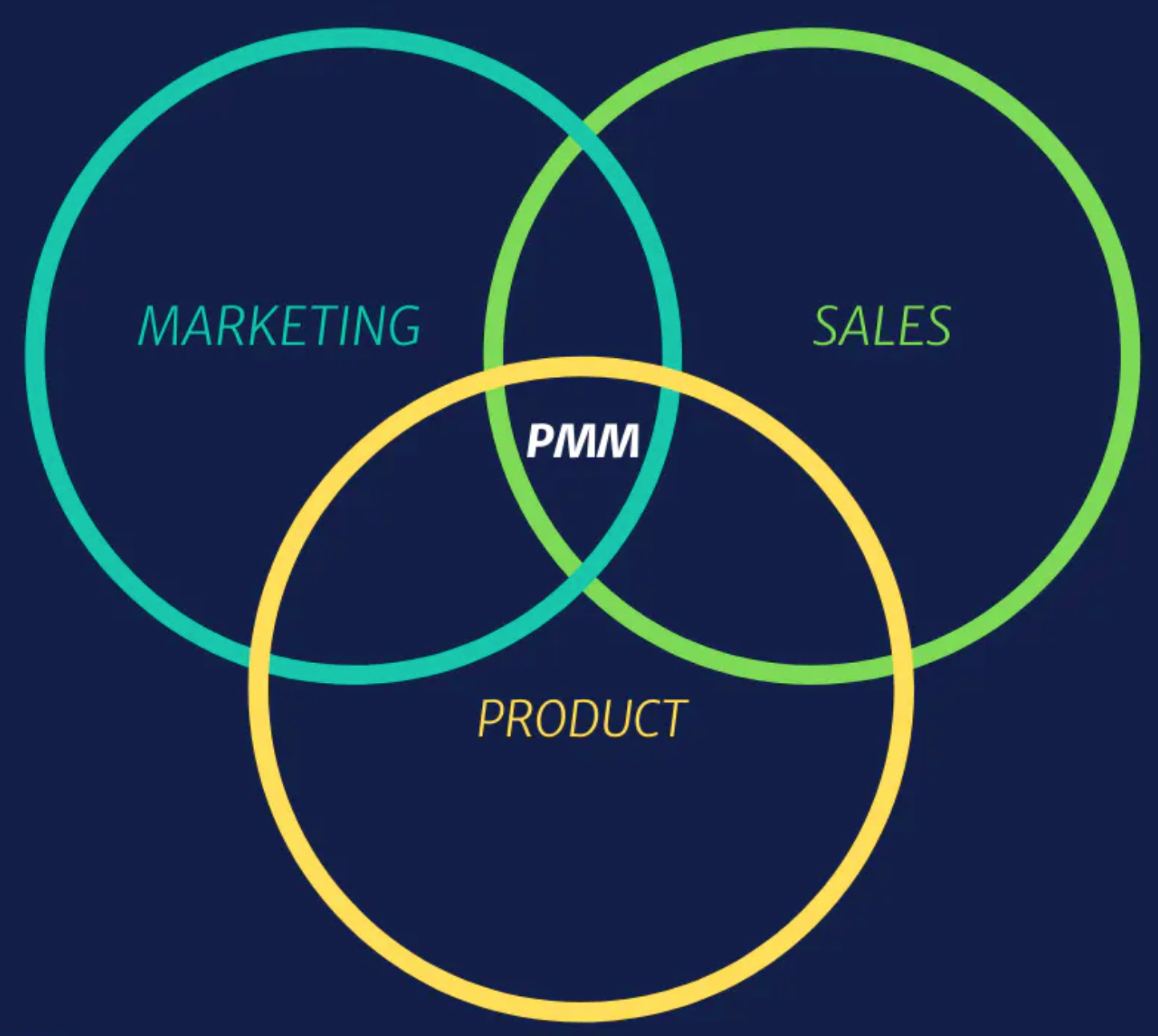
How Product Management Can Work Effectively With Marketing?
Collaboration between product management and marketing teams is crucial for the success of any product or service. Here are some ways to improve collaboration between these two teams:
1. Understand Roles and Responsibilities in the Product Planning Process
When teams work in silos without clear communication and alignment, it can result in conflicting goals, misaligned strategies, and a product or service that doesn't meet the target audience's needs.
For example, suppose product managers prioritize a feature that doesn't align with the overall marketing strategy or messaging. In that case, it can result in confusion and a lack of interest from potential customers.
To avoid these issues, both product management and marketing teams need to have a shared understanding of the goals and metrics for the product or service.
- Agreeing on key performance indicators (KPIs): KPIs include sales targets, customer acquisition metrics, and user engagement metrics. By aligning these metrics, both teams can work towards a common goal and ensure their efforts contribute to the product's success.

- Clarity on the scope and responsibilities: This includes defining who is responsible for what tasks and ensuring that there is no overlap or duplication of effort. This can be achieved through clear communication, regular check-ins, and having a shared project management tool where tasks and responsibilities are tracked.
When teams are aligned on shared goals and metrics, it leads to better collaboration, more efficient use of resources, and a product or service that meets the target audience's needs and drives business success, better customer research, efficient user testing, and top-notch agile development methodologies.
2. Establish clear communication channels
Encourage transparency and regular communication between the two teams. This can be done through regular meetings, joint brainstorming sessions, and open-door policies. Effective communication, active listening, constructive feedback loops, and clear agendas and action items can help avoid misunderstandings and miscommunications.
Some of the most effective channels include:
- Regular meetings: This can ensure that both teams are aligned on any challenges or roadblocks that the teams are facing and brainstorm solutions.
- Shared documentation: Shared documentation, such as product roadmaps, project plans, feedback management, and marketing briefs, can be used to ensure that both teams have a clear understanding of the scope, timeline, and deliverables of the project.
- Project management tools: Project management tools, such as Trello, Rapidr, or Jira, can track tasks, internal feedback, and responsibilities to track progress and provide visibility into the project's status.
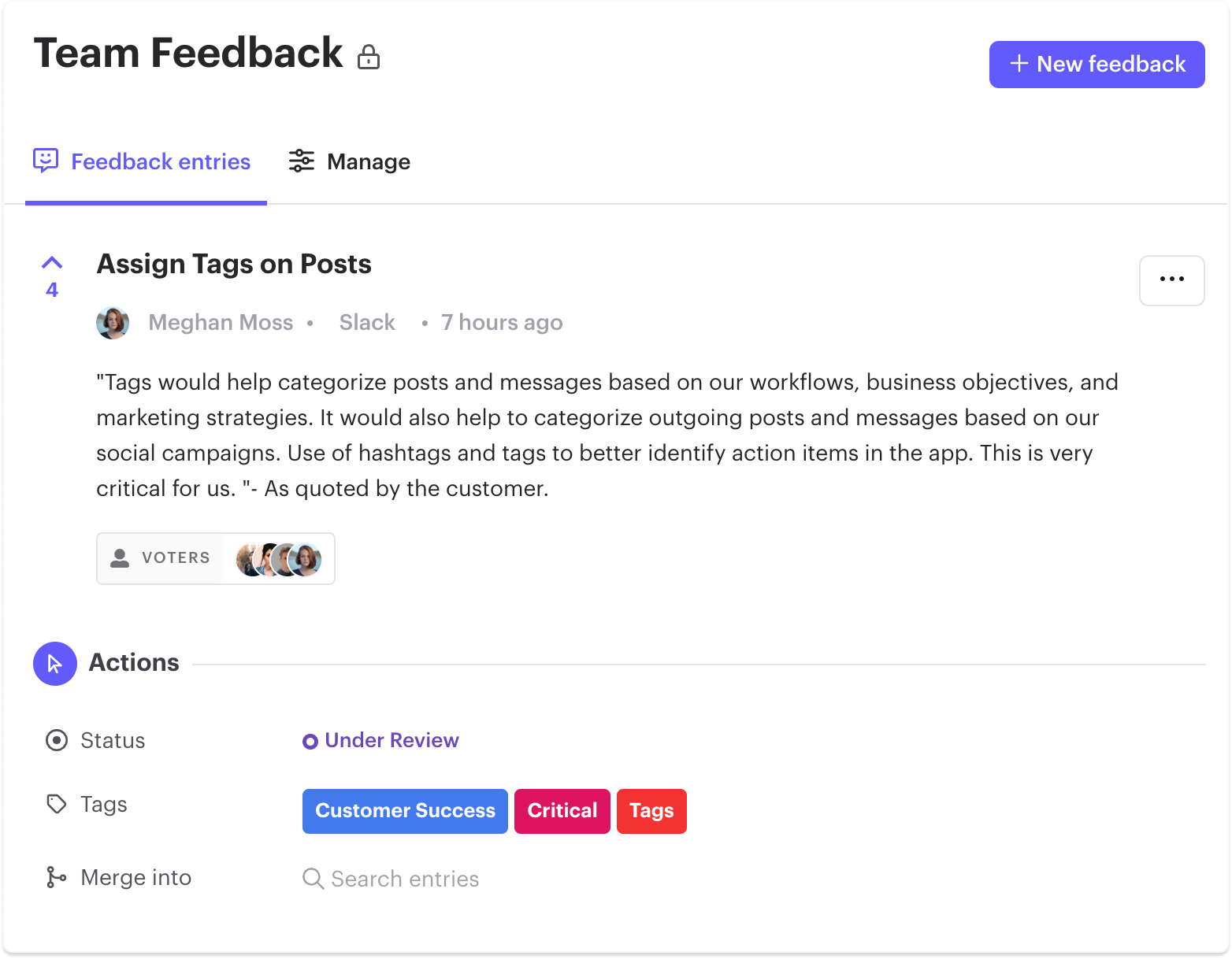
- Collaborative software: Software such as Google Docs and Miro can be helpful in brainstorming sessions, creating marketing copy, or developing product specifications.
- Communication tools: Tools like Slack, MS Teams, and Zoom can facilitate real-time communication between both teams.
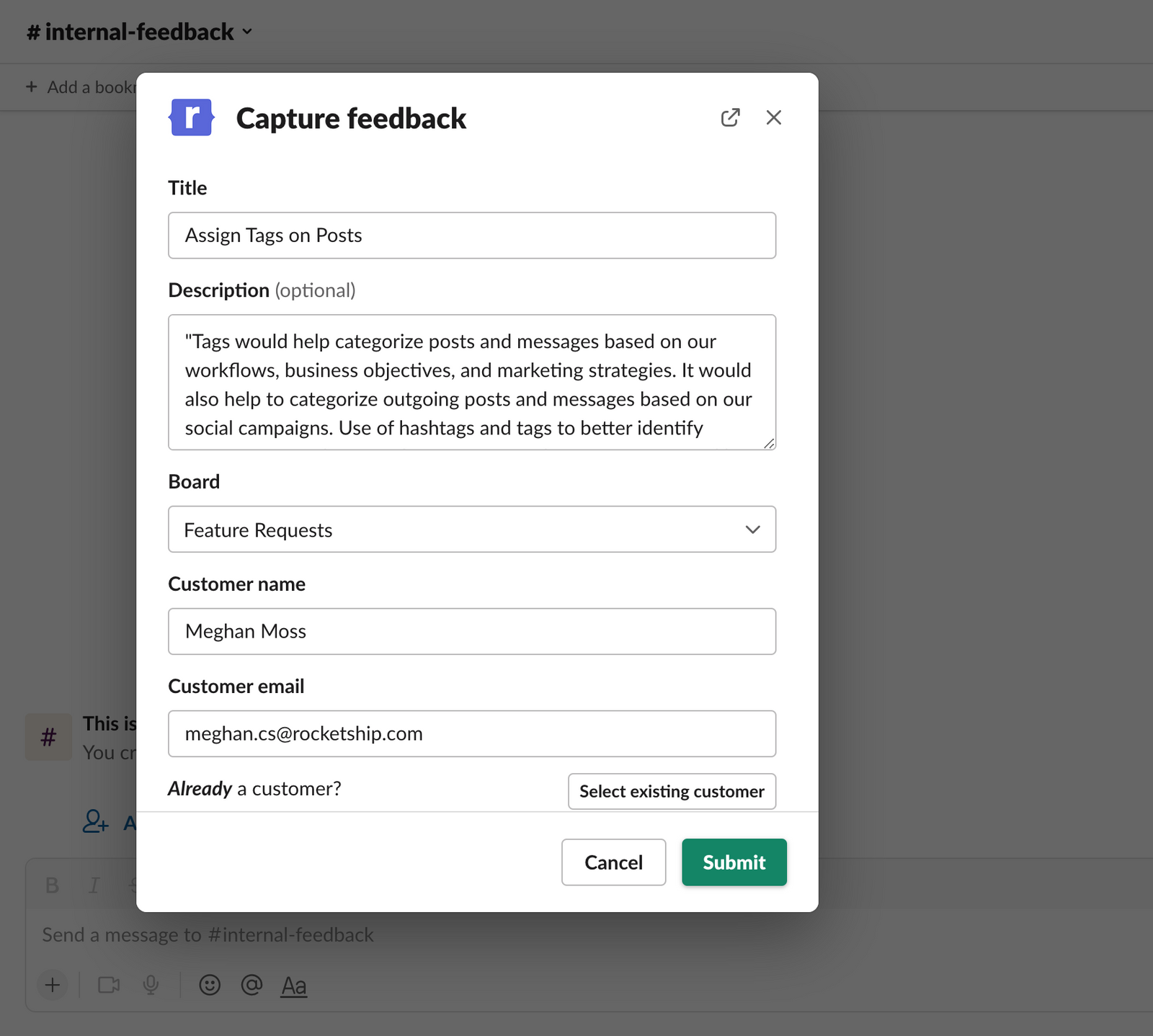
3. Collaborate on customer research, product ideas, and feedback prioritization
Collaboration between product management and marketing on customer research, product ideas, and feedback prioritization is crucial to the success of a product or service. Here are some ways in which both teams can collaborate effectively:
1. Customer research: Both product management and marketing teams should collaborate on user research efforts to gain a better understanding of the target audience. Working together, they can identify key customer pain points, needs, and preferences, informing product development and marketing strategies.
2. Product ideas: Product management and marketing teams can collaborate on product ideas by sharing insights and feedback from customer research. This can help ensure that new product ideas are aligned with the needs and preferences of the ideal customer personas and the overall business strategy.

3. Feedback prioritization: When prioritizing customer feedback, product management and marketing teams should work together to determine which feedback is most important and actionable. This can involve setting up a process for collecting and analyzing customer feedback and then prioritizing features based on customer impact, feasibility, user segments, and alignment with business objectives.
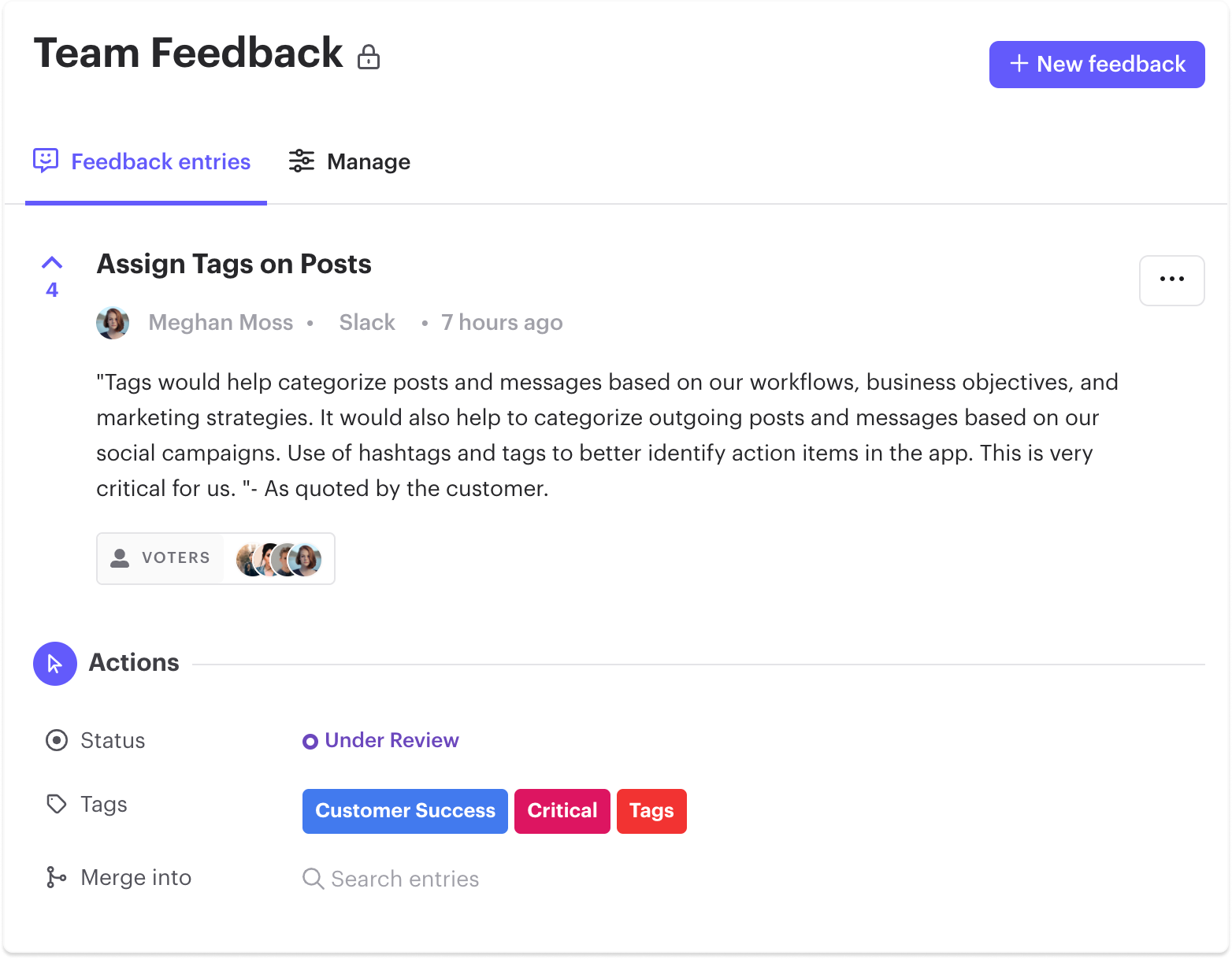
4. Involve Both Teams in the Product Development Process
For several reasons, product management and marketing in product development can lead to better insights, more customer-centric solutions, and more effective go-to-market strategies.
1. Customer-centric solutions: Product management is responsible for understanding the target audience's needs, defining product requirements, and ensuring that the product is aligned with the overall business strategy. Both teams can better understand customer needs and business requirements, leading to more customer-centric solutions.
2. Better positioning and adoption: Marketing teams create go-to-market strategies and messaging that resonate with the target audience. By involving marketing in product development, they can ensure that the product is aligned with the overall marketing strategy and is positioned effectively in the market, leading to better adoption and success.
3. Identify potential roadblocks or challenges: A cross-functional team focused on the customer and the business requirements to identify and address potential issues and track customer complaints before they become significant problems.

Overall, this results in a product or service that meets the needs of the target audience drives business success, and ultimately results in higher customer satisfaction and loyalty.
5. Foster a culture of cross-functional collaborations
Fostering a culture of collaboration and continuous learning between product management and marketing teams is essential for driving innovation, improving customer experiences, and achieving business success. Here are some tips for building a collaborative culture:
- Create cross-functional teams: Encourage collaboration by creating cross-functional teams, including product management, marketing, and other team members. This will help to break down silos and promote communication and collaboration between the two teams.
- Celebrate successes and failures: Celebrate successes as a team to build morale and reinforce the importance of collaboration. Similarly, failures should be viewed as opportunities for learning and growth and celebrated as such. This helps to create a culture where experimentation is encouraged, and teams feel comfortable sharing their ideas and feedback.
- Encourage feedback and transparency: Encourage feedback and transparency between both teams by regularly sharing updates on progress and outcomes with product roadmaps. This will help to build trust, foster collaboration, and promote a culture of continuous improvement.
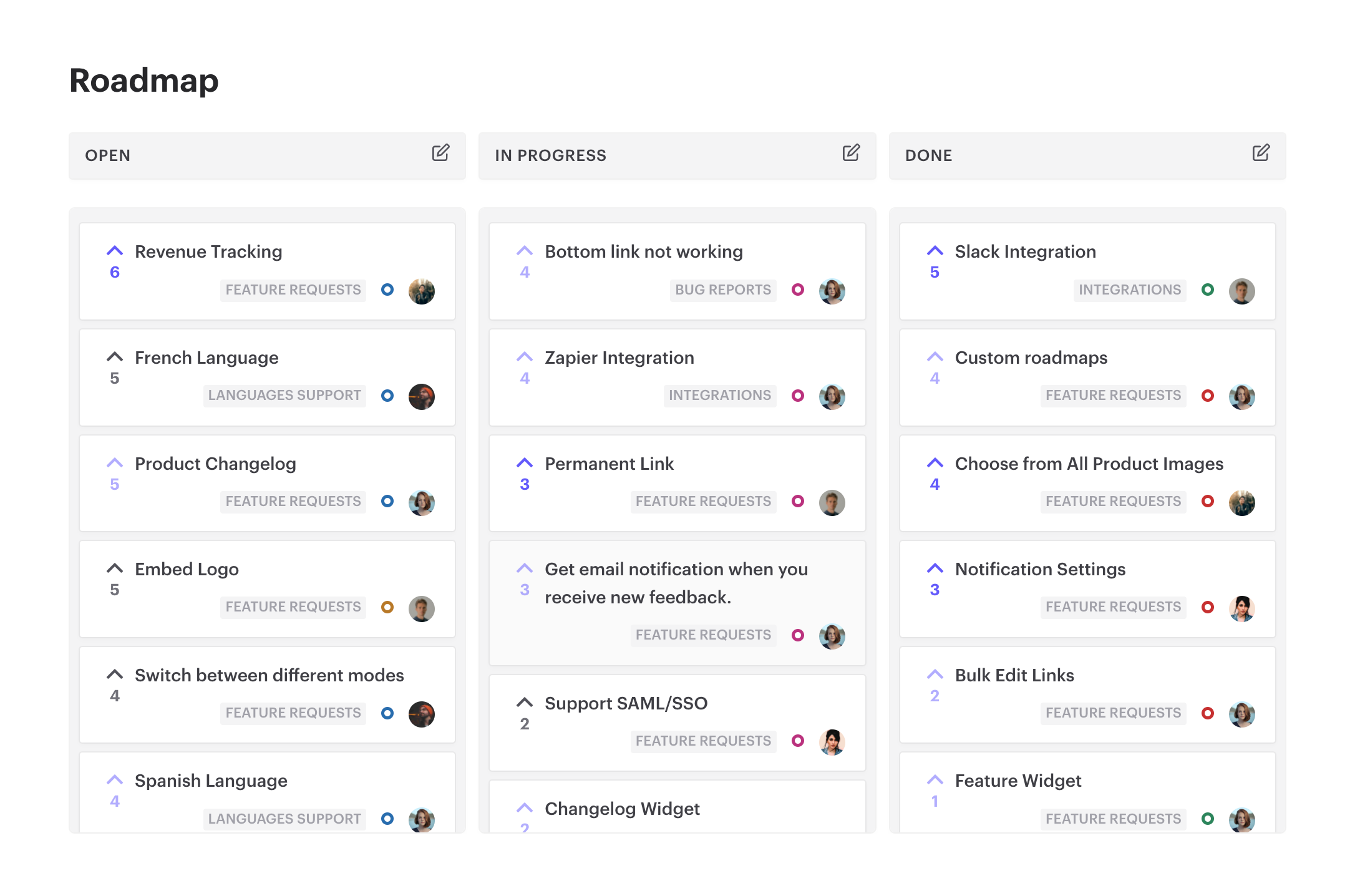
By fostering a culture of collaboration, feedback, and growth, both teams can work together more effectively and lead to a more customer-centric approach to product development and marketing, resulting in higher customer satisfaction, retention, and loyalty.
Effective Collaboration Between Product Management and Marketing with Rapidr
Together, product management and marketing contribute to the success of a product or service. Product management ensures that the product meets the customer's and the business's needs, while marketing creates awareness and demand for the product. By working together, they can make a well-positioned product that meets the customer's needs, increasing sales and revenue.
To improve collaboration between product managers and marketers, having a feedback management tool for different things running, from organizing and managing different types of customer feedback to communicating new feature releases and using customer pain points to create messaging and marketing strategies, is always good.
With Rapidr, you can collect, analyze, and organize feedback and engage with customers as their feedback moves through the development process. Sign up for free and set up a complete customer feedback system to inform and enhance your product development process.

